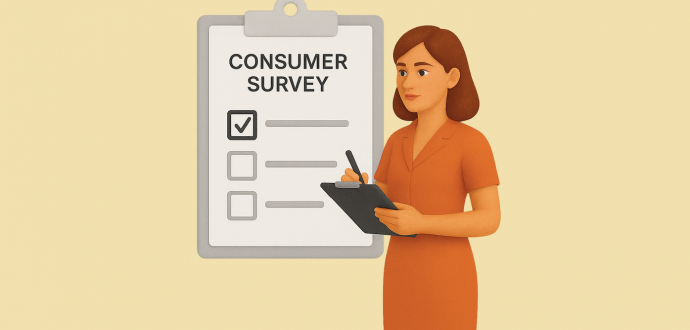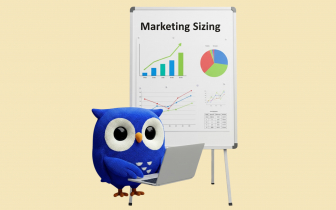How to Identify and Meet Consumer Needs (Examples Included)

Ever wondered how to make people buy your product?
The key is both simple and complicated — being able to meet their needs. This is non-negotiable. Basically, your business success depends on how well customers feel you're able to “get” them and deliver the right solutions .
The only trouble is that it can get confusing trying to figure out what those demands are and how you can address them. If this is you, don't worry. That's why we're here.
In this guide, we'll cover practical tips you can apply to know not only the needs and wants of consumers but also how to satisfy them.
What do your clients actually want?
Every successful brand we've ever known has one thing in common. They are extremely good at identifying and meeting customer needs. If you can do the same, then you're on your path to long-term, sustainable growth. So what are those client requirements?
They can look different from person to person. Still, they all boil down to getting solutions to problems they have or even enhancing the quality of their life. As such, common needs include:
1. Functional
Some people also call this product needs. This basically requires you to make sure your products/services work and have a practical, real-life application that helps your buyers solve their problems.
At the very least, your offering should make their workflow simpler and not complicate their life.
For example, think of any tool you rely on to carry out your daily tasks. Imagine you have a vacuum cleaner that’s hard to use and breaks down all the time. Well, then it’s only a matter of time till you just throw your useless vac and switch over to a more reliable solution.
It works the same in the service world. If some businesses want to improve their SEO and find a provider who gets them shitty links, you know what will happen. Soon, they will get rid of the poor service and go for a new, credible content marketing platform.
There could also be different scenarios. Say the software works well, but it costs an arm and a leg, and even then, it is rare to find. This then does not meet functional needs either. Why? Because price and availability are a big part of this.
2. Emotional
The emotional part focuses on how interacting with your product/service makes people feel. Most buying decisions are made subconsciously. And guess what?
People gravitate towards businesses that make them feel good or give them at least a sense of achievement. That’s why you must prioritize this area, as it can create brand loyalty.
This is the same whether you are in a B2B or a B2C business.
For example, you can use a pricing strategy that makes them get a positive emotional response. You know, they should feel like their money is well spent when they interact with your brand of service.
Source: Medium
3. Social
People care about what others think of them, and that’s what social needs are all about. Does using your product/service help raise their social status or look better in the eyes of others? Does it help them connect with others?
One example of how this works is people who use eco-friendly products only. Often, they have a similar surrounding. And subconsciously, they want others to relate to them.
The same thing happens with those who love bargain products or those who prefer exclusive, expensive products or services.
Almost any group of products/services creates a certain perception in society. So, if you want to appeal to a particular audience, consider what they care about.
4. Value-based
Your clients aren’t just mere numbers, even if they seem like that in your spreadsheets and reports. They are all people with their own values and beliefs. So, when you forget about this, you make your product/service blend with others on the market, losing your target audience.
Consumers need to identify with brands to be loyal to them. So, you have to understand the customers you target and what they value. Besides, think about what makes you special :
- Do you support any causes?
- Do you believe in an inclusive society?
- Do you have some incredible team values that make your brand special?
Whatever that is, communicate what defines your business personality, and you’ll definitely attract like-minded buyers. You can also fulfill this by having transparent policies that help consumers understand where they stand with you.
Source: Journal BCS
5. Journey-based
No one wants to jump through hoops to use your product or service. This is why user experience (aka their journey with you) is so important.
From the purchase process to when and how they actually use your product, everything should be smooth. It should also save their time and be stress-free.
You can also fill this need by having a customer support team that patiently listens to complaints, offers sincere apologies, and goes on to resolve the client’s problem. This help goes a long way to make people feel understood and valued along the way.
And of course, it never hurts to have your products packaged in an appealing way. The same thing applies to your software if you are a developer. It should come with an intuitive, convenient user interface.
So, these are the 5 basic needs of customers, but you can get more specific about what your clients want. This is especially useful when you’re creating your buyer persona.
How to identify customer needs
Before you can figure out how to meet customer needs and expectations, you first need to know how to identify them. These are four easy tips that can help you.
1. Ask them (interviews and surveys)
You can try to guess all you want or make up all kinds of theories. Still, the only way to know for sure what the consumer wants is by simply asking them. Thankfully, there are a lot of ways you can do this.
One way is to simply interview them and conduct surveys. The easiest solution here is to have your customer support team ask your clients questions when they get a chance.
But if you want to go deeper, you can create focus groups or think of some incentive/reward and create a bigger survey. There, you can encourage your consumers to give feedback on your brand as well as your competitors. You can potentially learn:
- About any negative or positive associations with your brand;
- How your offering compares to the one your competitors have;
- What level of value consumers assign to you.
There are many software programs you can use to make the survey not only informative but also intuitive and easy. This could be anything like SmartSurvey, SurveyMonkey, Typeform, etc.
Source: Customer Thermometer
For more in-depth data, you can use open-ended questions. For example, questions like "What's your biggest challenge with X product?" can reveal a lot.
Don’t ask random questions just because. First, brainstorm with different teams what insights you really want to get. What information do you lack? When you understand this, think about what questions can give you a proper answer to this.
The shorter your surveys, the better, of course. No one wants to spend hours on your questionnaires.
2. Grow your observation skills
Having good observation skills is a huge key to acing customer need identification. This helps you spot not just your clients’ preferences but also their behavior and pain points.
For example, you can use tools like Google Analytics to learn how people interact with your website.
Source: Google
If you want to analyze your website visitors’ behavior even further, go for Hotjar or any similar software.
Source: Hotjar
You want to pay very close attention to the pages (or sections) where people hang around the most. This could be a sign that they are trying to learn about that particular topic. This can also help you understand what messages and copy work best.
If users spend lots of time on your pages but don’t convert, maybe your copy is too informational. It might be time to get more salesy and use direct copywriting instead.
What if you have a high bounce rate on the page?
Well, it's a good sign that the content does not meet your customers' wants. So, you might want to understand your people better and update your website according to that.
Either way, you need to observe and track your clients, as this will help you not only get them better but also know how to serve them well.
3. Check social media and reviews
Social media is another great place to get into the minds of your consumers and know what they really think. People like to share their good and bad experiences. And social media is a great medium for connecting with users who have similar experiences.
If you have social media listening tools, you can easily monitor your brand mentions and measure your marketing metrics over time.
This way, you can spot when you're being mentioned in a conversation. Then, do a sentiment analysis to check whether your mentions are mostly negative or positive. This is extremely useful when you’re launching a new campaign or doing a rebranding, for example.
Source: X
Still, don’t stop at social media. Pay attention to review sites as well. These include Google reviews, Trustpilot, Capterra, Yelp, G, and so on.
See what people are saying about you and your competitors. This will help you clearly see what their complaints are, what needs are being met, and which ones are not.
Why should you bother checking what customers are also saying about your competitors?
What they are complaining about might just be a demand you can easily fulfill to win them over to your side.
4. Analyze the data
Okay, so we’ve talked a lot about data collection until now. But we all know that all this information is useless unless you analyze it.
This is where customer needs analysis comes into play.
Here, the process will be different for every company. Most likely, you already have some sort of framework in place for other purposes. So, check whether you can reuse that one.
Overall, any data analysis comes down to:
- Cleaning all the information you’ve gathered.
- Structuring and interpreting all those insights.
- Visualizing all the data to perceive it better.
It is a very generic explanation, still, it can give you an idea of what to research in the first place.
Source: Humans of Data
How to fulfill your buyers’ expectations based on real-life examples
Identifying the needs of customers is very important — it’s a skill every marketer must have.
But that’s only one piece of the puzzle.
What matters is what you do with the information you get. Here is what we can learn from real-life examples of companies that definitely knew what they were doing.
1. The more personalized your service, the better (Nike case)
Personalization is one of those clients' needs you want to put front and center. Successful brands have mastered the art of tailoring experience to each customer in a way that makes them feel heard and seen. No matter how hard that seems, you need this.
There are tons of examples of this, from Netflix's algorithm that suggests shows you are likely to enjoy to any store that offers clothing selection you might like.
But you can go further than that and offer a product/service that buyers can tailor completely or partially. A great example of this is the Nike By You program.
Apparently, even sneakers can say, “I see you.” Nike managed to achieve this by giving their clients the chance to choose the design of their own sneakers.
Source: Nike
People like to have this customization option to show off their unique personality. While this is fun, it’s also a great marketing and PR campaign since people are more likely to share their unique sneakers than any generic pair.
2. Listen to feedback and use it to improve your product/service (Tesla case)
Every software gets regular updates, which are partially done to patch up security vulnerabilities and fix any bugs. But this is also when you can show that you listen and value customers' feedback.
In fact, this is one great way to fulfill customer needs.
You can take a leaf from Tesla here. After a client posted a suggestion on Twitter concerning the position of the seat and steering wheel, Elon Musk responded. Tesla soon pushed out a software update that addressed this.
Source: X
So, how do you do the same?
Look for constructive customers' complaints or suggestions online. Respond politely and incorporate their requests if possible. If you can’t bring that to life, be open about it. It will help people connect to you and feel that you at least care to respond.
And if you manage to do that, you’ll have an extra piece of content for your socials:)
You can also update your clients as you work to make their suggestions a reality. Nothing says “I got you” like a business that does this.
After all, you get the satisfaction of knowing that you're building a product/service that directly meets real-world consumer needs. It also makes it much easier to market and sell a solution like this.
Sometimes, you can also check whether any client suggestions can be transformed into real-time marketing campaigns. It doesn’t happen often, but your fast reaction here can give your brand a great push.
3. Prioritize easy access and convenience (Zappos case)
If there's one thing we've seen so far in these customer wants and needs examples, it's that there is no single approach to it. Still, one thing that's always true is that clients are seeking easy access, simple processes, and features that save time. Who doesn’t?
No matter how useful your tool is, if it's complicated to use, you’d be missing out on a large chunk of the target market.
For example, how would you feel about a business that requires its buyers to go through a 10-step process before their issues can be resolved? You would think that’s too much hassle, and they need to improve their services. And you’d be right.
Troubleshooting common issues should be as simple as chatting with the customer service representatives in real-time. In some cases, even a chatbot can sort out the problem.
But this care starts with your team. This is where all of us can learn from Zappos. Their hiring culture is designed to filter out applicants who lack people skills.
Note: Just read the tweet below. It takes 30 seconds at most, but it explains everything.
Source: X
Thanks to such a particular hiring process, Zappos has built a name for itself for great customer service. So good, in fact, that they have an edge over others in their niche.
Their clients get unlimited call times. That’s exactly what it sounds like — once, an employee has been known to handle a 10-hour-long call!
Even better, their team members are encouraged to go off-script. Instead, the focus is on understanding and building a personal connection with the person.
As a result, they built a fiercely loyal client base.
4. Make sure your values align with your client targets (Patagonia case)
Sometimes, consumers' needs and wants go beyond just having the right features or a product. Remember what we said about emotions and values at the very beginning? They are crucial. And the more you work on this, the better.
For example, more and more people want to do their part to reduce carbon footprints, waste, and contribute to a cleaner planet. If a business is not socially conscious and actively participating in different causes, it can be left behind. But the reverse is also true.
Take a look at Patagonia. Their “Worn Wear” program proves that companies can nail both functional and emotional needs of their customers with even one initiative. How did they do this? It’s simple, really.
They encouraged their buyers to bring their old gear and get store credits in return. This is a perfect combination of giving people a chance to recycle their old items and showing that their brand cares.
Source: Patagonia
5. Go the extra mile for your people (Nordstrom case)
Nordstrom has a clear difference in how the employees go the extra mile to make their customers happy. Sure, they are not the only ones who do this, but they stand out.
The team is encouraged to use their best judgment to handle unexpected situations. This has led to some pretty funny incidents, like the tire refund story.
A man returned some tires. Now, this might not seem odd on the surface. Almost every business has a return policy, except for one little detail — Nordstrom does not sell tires.
Now, the company had every right to say no and turn the customer away. Surprisingly, they paid him back. In fact, this story and others like it led to Nordstrom being known for going out of its way to provide the best possible service to its buyers.
Source: Steven Van Belleghem
The business is also known to provide shoppers with manicure and pedicure services while they wait for their purchases. So, it isn’t surprising that to this day, the company’s customer service is still described as legendary.
6. Use technology to deliver a better experience (Nars case)
Technology has made it easier for marketers to gather information about consumers’ marketing needs. But it can also make it really easier for you to deliver the solutions they need.
One of the many challenges online shoppers face is trying to figure out if a purchase will look right on them. You know, to avoid that expectation-reality situation.
Companies like Nars that offer virtual store experiences are using tech to solve this old problem. Their clients can virtually try products before they buy. Customers at Nars can try on the suite of virtual makeup tools. This way, they get to see exactly how well the cosmetics fit them.
Source: Nars
This is a great way to use technology to both improve your service and help personalize the experience. Of course, this is not something every single store out there can integrate because you can’t compare the budgets corporations have to what a typical SMB possesses.
Still, you can always find ways to leverage tech to deliver better services. Even just adding chatbots to your options can help improve customer service. So, the main point here is to experiment and see what you can do within your budget.
Conclusion
Anyone who reads this should have no problem understanding customer requirements and ways to both spot them and use them to improve your offering. When you apply the tips we've shared, you will be well on your way to making your buyers’ lives easier.
Keep in mind that specific needs and wants can shift from time to time. Still, if you are consistent in showing that you value your clients’ feedback and using that to improve service, you'll go very far.







